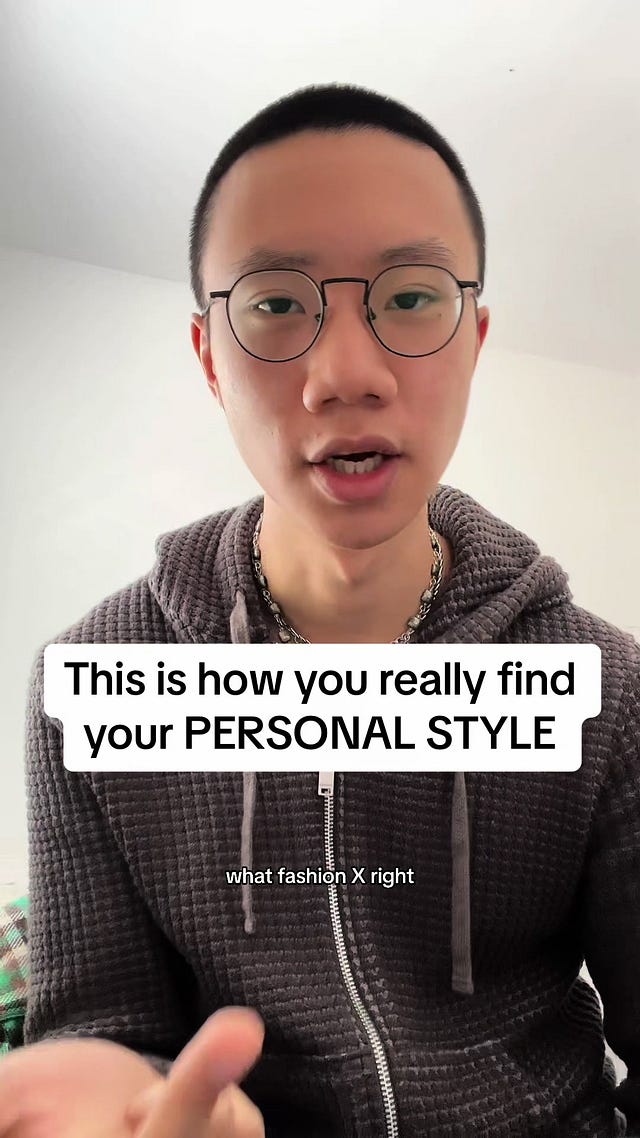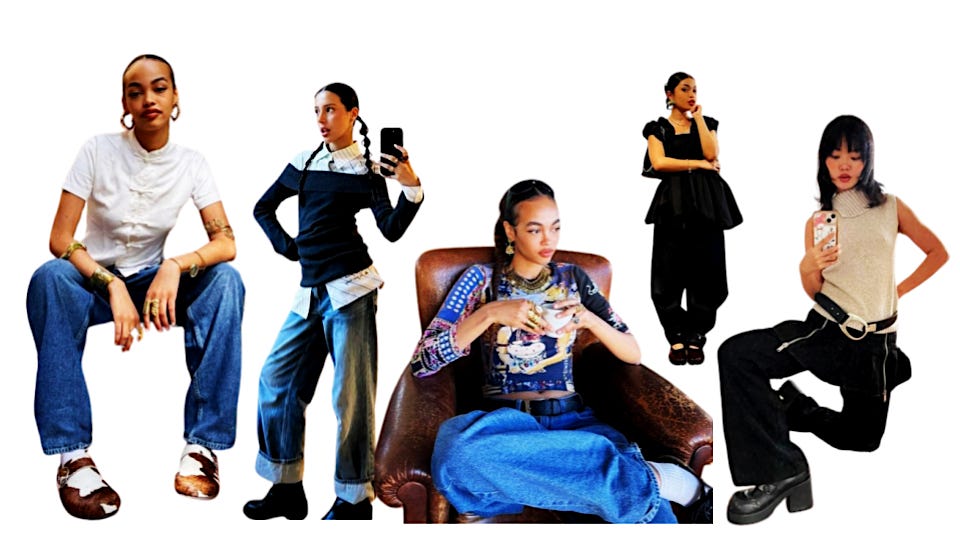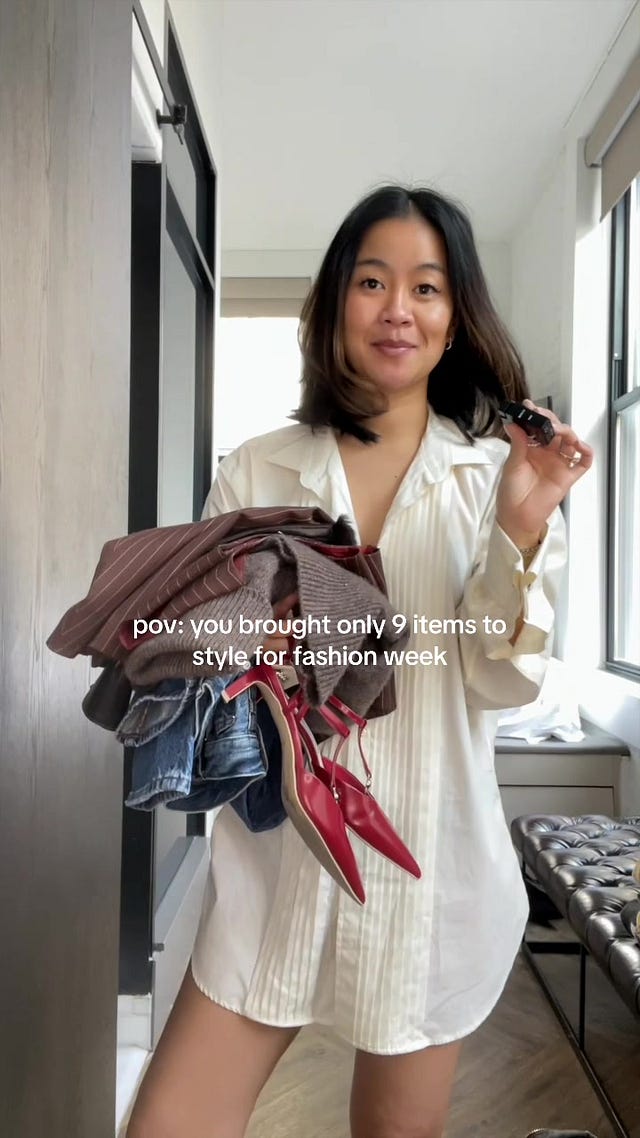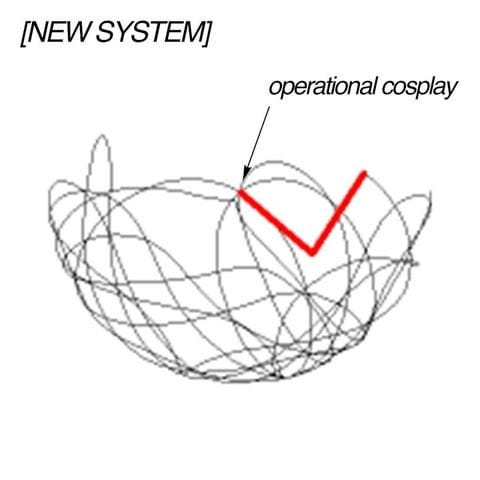The algorithm’s new crush on ‘personal style’
Why we're turning back to ‘personal style’, and what that really means in 2024
MØRNING. This week we welcome back our resident fashion-data expert Molly Rooyakkers (aka the iconic Style Analytics) with news of a style shift underfoot.
We’ve been expecting hoping for a while now that personal style would have a well-deserved moment in the collective consciousness. Combine the continued rise of the second-hand clothing market with the impossible-to-keep-up-with trend cycle (and increasing apathy over its superficiality) and it seemed inevitable. Now, that moment might have hit, and it raises a whole bunch of questions around the state of subculture and what it really means for style to be ‘personal’ in 2024…
Year after year, we hear predictions that personal style is making its grand comeback. If you look back, you'll find a trail of articles from 2020, 2019, 2018, and beyond, all proclaiming, 'This is the year personal style triumphs,' or 'Not a fan of this year's trends? Discover how to cultivate your personal style in 10 easy steps.’
And then it doesn’t, and we recede deeper into our rabbit hole of trends, aesthetics, and (more recently) -cores.
At the beginning of this year, I made a video about 3 new online aesthetics that were trending online: mob wife, eclectic grandpa, and office siren, and compared them in terms of search volume, demographics, and online interest. Of course, making a video this thick with chronically online fashion jargon meant that a number of the comments were along the lines of: “The trend cycle is overwhelming,” “Aesthetics are bad for my mental health,” and “This is the worst thing that has happened in 2024.” I’d argue that the latter is incorrect, but I understand the sentiment.

 Tiktok failed to load.
Tiktok failed to load.Enable 3rd party cookies or use another browser
The mob wife aesthetic may have been the final straw for a lot of people when it comes to online aesthetics – with there being as many people genuinely engaging with the trend as there were people criticising the aesthetic or using it as a starting point to making up their own aesthetics. And fair enough: the aesthetic could be linked to clear capitalist intentions: the Sporanos 25th anniversary, it being “launched” during a period of fashion “downtime,” its reliance on fur and faux fur, and it being a subtle proponent of being someone’s “wife” (it seems no coincidence that the “rockstar girlfriend” trend emerged in late 2023 too, at a time when trad-adjacent aesthetics like coquette and trad-wife have seen rising seeing popularity with young girls).
How fast mob wife launched was also a subject of critique: it went from 2,000 worldwide Google searches in December 2023 to 186,000 in January 2024. This was likely caused by the fashion community catching on to how viral a video can go if you attach yourself to the early phase of an aesthetic, combined with the critical discourse that was happening in the comment section, all of which contributed to further promotion by the algorithm. It became the perfect example of a trend manufactured solely by social media.
Apart from the mob wife criticism, the most popular comment heard in man-on-the-street interviews when asked ‘what trends are you excited for in 2024’ seems to be “personal style,” “no trends,” or “no more cores.” Meanwhile, creators are capitalising on this intention, with hashtags like #personalstyle and #howtofindyourstye increasing by 55% and 148% respectively in the past year. We’ve also seen methods and challenges such as the 333 Outfit Method or the 75 Hard Style Challenge go viral on TikTok in the past month, both in their own ways offering their own techniques for cultivating a sense of personal style.
With the ever-powerful social media algorithms becoming more attuned to our personal interests and preferences, it’s easier and easier to be fed content from people who look, act, and dress exactly the way that we do. As Kyle Chayka says on The Ezra Klein Show titled How to Discovery Your Own Taste (a podcast episode that went viral back in January):
“The problem with being surrounded by algorithmic recommendations is that it prevents us from being challenged and surprised a lot of the time, like everything is moulded to our preferences that we’ve already expressed. [...] We’re herded and shepherded toward experiences that we’re going to find comfortable enough.”
Why the heightened disdain now?
In short, the social media trend cycle has become exhausting in its virality. While newly-coined aesthetics allow users to explore different worlds throughout clothes and styling, the algorithm means that users are funnelled into the same conversation, collectively shifting between each area of focus and leaving little room for individual inspiration or adventuring.
The Self-Determination Theory (Deci & Ryan, 1985), a widely acknowledged framework on motivation and personality development, emphasises the essential psychological needs for autonomy, competence, and relatedness. This theory elaborates on the importance of finding an equilibrium between autonomy—our capacity for personal thoughts and experiences—and relatedness—the feeling of connection and recognition within our groups. On the individual level, if these factors are out of balance or the environment does not allow for these three attributes to be achieved, an individual may experience mental health problems like anxiety or depression. This doesn’t mean we’re in some global state of depression caused by algorithms (that’s a conversation for another time). But it's reasonable to suggest that our sense of autonomy is being compromised by the sheer amount of content we are seeing online of people who resemble ourselves. We’re seeking the individuality that we all crave, but ending up on that same damn influencer content.

 Tiktok failed to load.
Tiktok failed to load.Enable 3rd party cookies or use another browser
Culture versus Subculture
The irony here is that online aesthetics emerged from subcultures, which as you probably know, often emerge as a way for individuals to find identity, community, and expression outside of the mainstream. Many subcultures have emerged online, but the ease of access by other internet users means their aesthetics have been easily adopted by non-practicing members hoping to associate themselves with counterculture. It’s a process that has birthed many online aesthetics and now “cores”.
Take cottagecore, which romanticised rural living during the pandemic, and created a genuine community of individuals who shared their everyday experiences of this lifestyle. Or early bimbocore which, beyond its characteristic visual mood also acted as a precursor to fourth-wave feminism, advocating for the empowerment and reclamation of feminine traits, rather than confining women's power to those who conform to patriarchal standards and achievements. Individuals who embraced these online aesthetics were showcasing their distinctiveness, building a community, and encouraging others to join in and dress the part. These styles were distinct and unique enough to potentially be considered both an aesthetic and a personal fashion statement.
What about aesthetics like Clean Girl or Quiet Luxury? Trends like these have become so popular that embodying them does erase a sense of personal style, however, I would argue that online aesthetics themselves are not to blame - mainstream culture has always created popular trends that speak to the sign of the times. Maybe we’re forgetting all of the individuals who are choosing to associate themselves this aesthetic and what that means for their self expression. Associating with even the most faddy of trends is a declaration about how you want the world to see you.
Where does that leave us?
Look, the online trend machine isn’t all bad. Let’s not forget that it's only a small section of influencers who promote totally superficial dressing: for the majority of us, our wardrobes will be moulded by all manner of things, from our body size to our favourite colours to our access to different garments.
Plus, there is an argument to be made that one way of dressing is not superior to any other way of dressing. The abundance of references and aesthetics being shared on social media can inspire a sense of play in our daily rituals, where aesthetics like mob wife or western gothic allow us to dress up or become inspired by people who are completely different from ourselves. This character-play isn’t mutually exclusive to personal taste either, escaping to different worlds via clothes is a brilliant tool for exploring our style and what makes us feel the best.
This new promotion of personal style may not endure, and neither will our own tastes (we all know our identity and self-expression can ebb and flow). But any kind of shift towards slower, more considered, more personalised fashion choices will never be a bad thing. Not only does it gear us away from over-consumption, but style choices inspired by your lived experience will always feel richer, more meaningful, and more like you. A push towards style that feels true to ourselves, whether that means re-normalising capsule wardrobes or having a go-to rotation of characters to switch between, will surely be beneficial for us all.
That’s all for today! Do you feel like personal style is making a comeback? And what does that look like for you? As always, catch us over at morning.fyi.
Until next time…
Words: Molly Rooyakkers
Editor: Letty Cole







Correct, the mob wife aesthetic has me over trends for this lifetime & into the next.